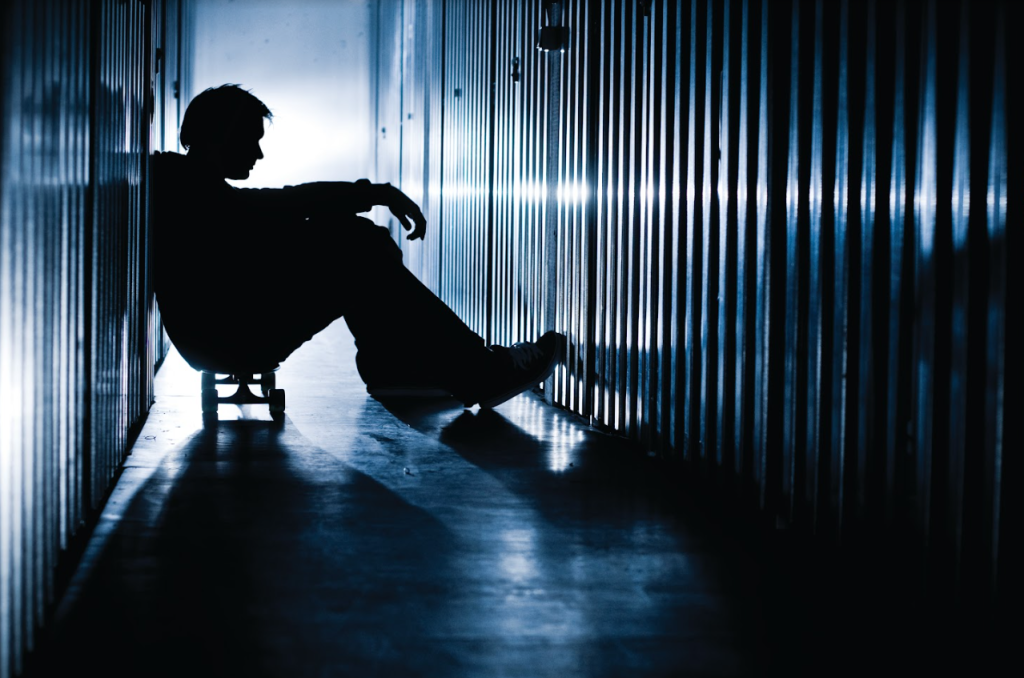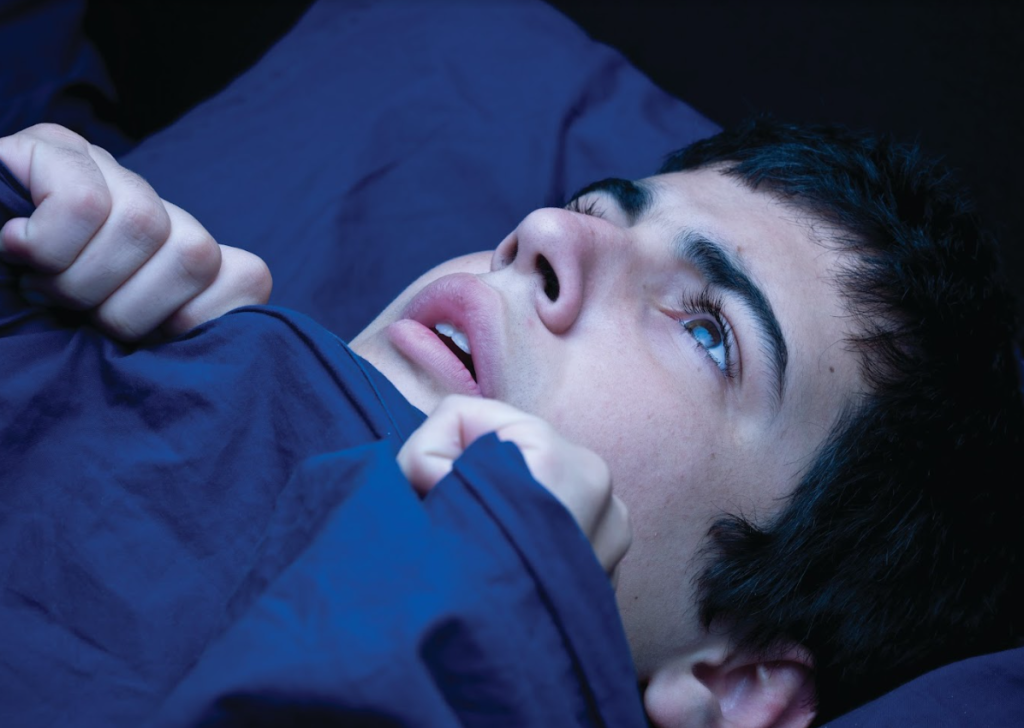Mental health is as vital to our nation’s well-being as physical health. Just like other organs in our bodies, our brains can become unhealthy or suffer from disorders. If the mind suffers, the body follows. These ailments profoundly affect the lives of those affected and their friends and family. But we have ignored these problems for decades
By Abhijit Chanda
- In India we have ignored mental problems for decades, dismissing them with myths and stigmas that are in our perceptions
- Schizophrenia causes people to have delusions and hallucinations, become paranoid, and even withdraw emotionally
- India’s mental healthcare network is even less adequate than our physical healthcare network when catering to our population
- Behavioural or conduct disorders are when people misbehave, treating those around them and even animals cruelly
THERE is a good chance that someone in your family has a mental condition. It may even have been affecting their everyday lives for years, but they simply don’t know there’s something wrong since they aren’t aware of how it’s identified.
This highlights a glaring problem with our country. As a population, we are abysmally ignorant regarding mental health conditions, what they are like, and how they are treated. How will we ever improve if we don’t know what ails us and how it is treated?
Mental health is as important to our nation’s well-being as physical health. Just like the other organs in our bodies, our brains can become unhealthy or suffer from disorders. If the mind suffers, the body will follow. These ailments profoundly affect the lives of those affected and their friends and family. But we have ignored these problems for decades, dismissing them with myths, misinformation, and stigmas that have latched onto our perceptions and blinded us to reality.
THE BURDEN
Over the previous decade, between 1.3 lakh and 1.4 lakh Indians committed suicide each year. Then, in 2021, suicide rates jumped to 1.64 lakhs. This was probably due to the loss of livelihoods and lives during the pandemic. According to a report from the National Crime Records Bureau (NCRB) in 2022, Maharashtra had the highest rates in the country with over 22,000 suicides per lakh, or 13.5%, followed by Tamil Nadu at almost 19,000 per lakh, or 11.5%, Madhya Pradesh (9.1%), West Bengal (8.2%), and Karnataka (8%).
The primary reason why Indians have been taking their own lives is due to family problems. Suicides, for this reason, account for 32% of all suicides, with “illness” accounting for 18.6%. However, the NCRB doesn’t list which illnesses. Other studies on the topic have found that around 90 percent of the people committing suicide in India probably have a mental disorder.
In India, 1 in 7 Indians lives with a mental health disorder. In 2017, this was over 190 million individuals. This was found in an insightful study published in The Lancet in 2019 called The Burden of Mental Disorders across the States of India: the Global Burden of Disease Study 1990–2017 by Rajesh Sagar et al. A lot of the information in this article is based on this study.
THE INFRASTRUCTURE
So, what infrastructure do we have to treat these millions of Indians? According to the National Mental Health Survey 2015–2016, “The availability of psychiatrists in the NMHS states varied from 0.05 per lakh population in Madhya Pradesh to 1.2 per 100,000 population in Kerala. Data available for some of the high-income countries indicate this number to be between 1 and 2 per 100,000 population. Except for Kerala, all the other states fell short of this requirement.”
In a letter written by C Naveen Kumar and Prabha S Chandra from the Department of Psychiatry, National Institute of Mental Health and Neurosciences, Bengaluru, Karnataka, published in the Indian Journal of Psychiatry in 2019; says “the number of psychiatrists in India currently is about 9000 and counting. Added to this, about 700 psychiatrists graduate every year. Going by this figure, India has 0.75 Psychiatrists per 100,000 population, while the desirable number is anything above 3 Psychiatrists per 100,000. This is a very conservative estimate going by the figures of 6 Psychiatrists per 100,000 population in high-income countries. Taking three Psychiatrists (per 100,000 population) as the desired number, 36,000 is the number of psychiatrists required to reach that goal. India is currently short of 27,000 doctors based on the current population of the country.” Also, as noted in another part of this letter, 9,000 is just an estimate since many psychiatrists listed in the registry have moved abroad to practise.
According to a report from the National Crime Records Bureau (NCRB) in 2022, Maharashtra had the highest rates in the country with over 22,000 suicides per lakh, or 13.5%, followed by Tamil Nadu at almost 19,000 per lakh, or 11.5%, Madhya Pradesh (9.1%), West Bengal (8.2%), Karnataka (8%)

And the condition is the same for other mental health practitioners like clinical and health psychologists who provide therapy for those affected and advise others on preventing mental issues. So we see the pattern here. India’s mental healthcare network is even less adequate than our physical healthcare network when catering to our population of 140 crores. Drastic action must be taken to open more PG seats for psychiatry and psychology to meet the rapidly growing demand.
ACTUAL SYMPTOMS OF MENTAL ILLNESS
We have seen the horrifying suicide rates in India. Many of these can be attributed to severe depression. But milder forms of depression can be debilitating. Those who suffer from it, myself included, find it difficult to get out of bed in the morning, calling in sick frequently, increasing their chances of getting fired, and leading to even deeper depression. They often consider hurting themselves or even committing suicide. In India, 4.6 crore people suffer from symptoms like these, and every person experiences them differently. In fact, there are many more ways mental conditions can manifest. Entire books can be written on each condition, so we won’t be able to fit all the details into one article.
People with anxiety disorders have their lives filled with worry and stress, often collapsing in a panic attack where their heart beats uncontrollably and it becomes hard for them to breathe. Peace and calmness are a luxury for the 4.5 crore Indians suffering from this. Depression and anxiety can also manifest together, creating even more chaos in people’s lives. These conditions can also lead to the development of Obsessive-compulsive disorder (OCD) where people become obsessed with certain aspects of their lives to compensate for their anxiety and depression. An overwhelming sense of paranoia, a fear of germs, dirt, or bodily harm, lead to compulsive habits of washing hands, bathing, cleaning their home, locking doors and windows, and checking them all multiple times.

These conditions can have a variety of causes. They could be relatively temporary, like the loss of a loved one leading to depression, the loss of a job, not getting a high salary raise, or having an argument with a loved one or colleague. Acute anxiety can be triggered for similar reasons, as well as just before a big presentation or meeting your boss, at times of high stress like not having enough money to cover all the expenses, or even from trauma like an accident or some other harrowing experience. These are things we all deal with at some point or another. Suppose these feelings continue for an extended period, like a month or more. In that case, this can become chronic and require a more serious intervention.
A condition that’s even more common than depression and anxiety is Developmental Intellectual Disability Disorder (DIDD). This is when an individual has great difficulty learning or processing thoughts. These people can usually be diagnosed before they turn 18 and have below-average IQ scores, ranging from 0 to 19 if the condition is profoundly severe and up to 85 or so if it’s mild. Over 4.6% of our population suffers from this condition. Even those with mild DIDD are frequently the subject of whispered conversations, avoided by the general public, or even mocked by some. For them, getting a job or living a ‘normal’ life, whatever that may mean, is practically impossible.
Eating disorders like Bulimia Nervosa and Anorexia Nervosa affect around 0.2% of our population. That sounds like a small number until you consider the size of our population. That is approximately 20 lakh people, a number slightly larger than the population of Manipur, who are suffering from these debilitating and, sometimes, life-threatening disorders. People suffering from Anorexia (contrary to common belief, eating disorders occur not just in women but in men too) starve themselves to the point that they are considered extremely underweight. People who suffer from Bulimia alternate between eating large quantities of food and vomiting it out. Unlike those suffering from Anorexia, bulimics look otherwise healthy, making it even harder to spot what they are going through.
Depression and anxiety can also manifest together, creating even more chaos in people’s lives. These conditions can also lead to the development of Obsessive-compulsive disorder (OCD) where people become obsessed with certain aspects of their lives to compensate for their anxiety and depression
Have you met children who aren’t able to speak, even at an age where they should be chattering away? They might also have trouble making eye contact or don’t understand how to behave with others, play with other children, or have any social interactions. Additionally, they might be highly sensitive to some sounds or become very agitated by them while being enamoured with others. These children may be on the Autism Spectrum. Autism Spectrum Disorder (ASD) affects around 0.4% of our population. As the name suggests, this is a group of disorders with a much more extensive range of symptoms and intensity than I can add to this article. I can say that ASD can strongly affect a family’s dynamics and the child’s future. And these conditions are just to mention a few. Bipolar Disorder, or manic depression, is when a person transitions from deep depression to extreme positivity and energy over weeks or months.
Attention Deficit Hyperactivity Disorder (ADHD) is a condition often manifested in childhood but can remain late into adulthood too. People with ADHD, like myself, can find it very difficult to focus on one thing for an extended period and are easily distracted in the middle of conversations or meetings, their thoughts wandering from one thing to the next in seconds. It’s also nearly impossible for them to gauge time accurately or prioritise their tasks well. ADHD can manifest in three different ways: one is hyperactive, where the person is always fidgeting, talking, interrupting, and being impatient and impulsive; the second is the inattentive type, where the person may not be hyperactive physically but their minds tend to lose attention very quickly; and finally, there is a combination of both of these presentations.
Schizophrenia causes people to have delusions and hallucinations, become paranoid, and even withdraw emotionally. In some extreme cases, people can think they have thoughts that aren’t their own, that they are speaking to people who aren’t there, or that their movements are being controlled by someone else. The movie ‘A Beautiful Mind’ uniquely portrays this condition. Unfortunately, in real life, the condition can have profound implications and be a truly terrifying experience for the person suffering from it and their families and friends. Even now, people with schizophrenic disorders are told they are possessed or cursed.
Behavioural or conduct disorders are when people misbehave, treating those around them and even animals cruelly. They could deliberately start physical fights, damage property, use weapons, etc. Are they just hooligans and delinquents, or are they suffering from something they don’t understand?
WE HAVE BLINDERS ON
These are all serious, chronic conditions that affect people’s lives profoundly. But we all have mental health concerns that we must address. It could be extended periods of stress—due to our jobs, family dynamics, relationships, losing a loved one, or an extended period of sickness or injury. These may not be simple problems we’ll simply get over. Of course, some of us have better-coping strategies than others, but that’s not a guarantee. Therapy could help us deal with life better, but we just don’t realise it.
We watch Western TV shows where a character is always talking to their therapist. Many of us dismiss it, assuming all these people just go to therapy for no reason. It’s just a fad; these are problems of the rich; these are first-world problems. But are they? Most definitely not. These are problems that have always been there in every corner of the world since the earliest human ancestors. We now have a better understanding of these conditions, and how to treat them, than ever before. But the myths and stigmas built up in our society are blinding us to these facts and stopping us from getting the help we need. If I go to therapy, society will shun me for being crazy -Even if one accepts a diagnosis, many still put society’s perceptions above their own treatment needs. Seeing a psychiatrist or therapist is usually a last resort. Therapy can be for anyone, not just those with serious mental disorders. Therapy can help people cope, understand themselves, overcome stress, and settle relationship issues.

We watch Western TV shows where a character is always talking to their therapist. Many of us dismiss it, assuming all these people just go to therapy for no reason. It’s just a fad. These are problems of the rich
Anxiety and depression are emotions that all humans feel from time to time. That is perfectly normal. When faced with traumatic events or high amounts of stress, it’s perfectly acceptable to seek help from a therapist or counsellor.
Men shouldn’t cry or show emotion – Our society has many damaging gender norms. We are all humans and feel emotions naturally. Suppressing emotional or mental anguish can lead to more severe disorders. Boys and men should be encouraged to discuss and express their feelings and seek support if needed.
Children and teens cannot have mental health issues -This is so obviously wrong. Children and teens are known to suffer from anxiety, depression, ADHD, and other disorders, and many of these cannot simply pass as a phase or something they will grow out of. Their scores also don’t necessarily reflect what they are going through. For instance, high marks in their exams don’t automatically mean they are mentally healthy.
ISSUES REQUIRE ATTENTION
The survey ‘Magnitude of substance use in India’ done by the Ministry of Social Justice and Empowerment, NDDTC and AIIMS states that 14.6% of people about (160 million) were current alcohol users between 10 and 75 years of age. About 5.2% of Indians are estimated to be affected by harmful or dependent alcohol use. About 2.8% of Indians (31 million) reported using cannabis products within the previous year and about 0.66% (approximately 7.2 million individuals) need help for their cannabis use problems and 2.1% of the country’s population (22.6 million) uses opioids which include opium, heroin and different pharmaceutical opioids. About 0.55% of Indians are estimated to need help for their opioid use problems. At the national level, the most common opioid used is heroin, (current use 1.14%) followed by pharmaceutical opioids (current use 0.96%) and opium (current use 0.52%). The overall prevalence of current use of opioids is 2.06%.

Eating disorders like Bulimia Nervosa and Anorexia Nervosa affect around 0.2% of our population. That sounds like a small number until you consider the size of our population. That is approximately 20 lakh people, a number slightly larger than the population of Manipur, who are suffering from these debilitating and, sometimes, life-threatening disorders
The National Mental Health Survey 2015–2016 showed that 150 million people in India needed intervention for mental disorders. However, less than 30 million are seeking care at present. Except for epilepsy, all the other mental disorders had a treatment gap of more than 60% with the highest treatment gap being for alcohol use disorders (86%). One in 20 persons in the country suffers from depression, out of which 39% suffer from severe depression.
A 2015 study in South India found that one-third of participants were unaware of mental diseases. Mental health difficulties range from modest in healthy people to severe and life-altering. I’m sure there are millions more who simply don’t know what they are suffering from or are hesitant to get help because their families and society may think they are crazy.
ONLY “CRAZY” PEOPLE HAVE MENTAL DISEASES
This toxic terminology is everywhere—in our society, in our minds, and in our languages. We look down on people who may be affected by mental health issues. We see how people speak, move, and have intellectual capabilities and make judgements about them, ranging from disgust to pity. The truth is that mentally ill people can seem normal in society while expressing their agony only in private.
Quite a few mental disorders have genetic causes. ADHD, bipolar disorder, depression, autistic spectrum disorder, and schizophrenia can be inherited, although environmental factors may also trigger or aggravate them.
Mental health difficulties are often dismissed as minor. Many see them as just a phase. Just meditate, do yoga, and think happy thoughts, and you’ll be fine. Right? These may help temporarily, but seeing a psychologist (a non-medical practitioner licensed to offer therapy) or psychiatrist (a medical doctor specialising in mental health) is vital and should not be postponed. Professional counselling and maybe even medication are the only options for long-term treatment and control of these conditions.
Organisations like The Minds Organisation, Aasra, SCARF, Sanjivani, Sangath, and many more are working hard to reach those who need mental healthcare; many have helplines too. Keep some handy just in case you meet someone who needs their help.
THE TREATMENT
The good news is that all these conditions can be managed with the right treatment. Clinical psychologists, psychiatrists, and licensed social workers can diagnose mental health disorders. They use clinical expertise and various diagnostic methods to gather information about the symptoms, family history, and other relevant factors. Mental health professionals create customised treatment plans for each patient. These may include:
Counselling: Different therapies may be recommended for different mental health issues. Cognitive behavioural therapy (CBT), dialectical behavioural therapy (DBT), family therapy, and group therapy are popular and effective. CBT is a versatile, evidence-based method where the patient understands their behaviour and works to change it. DBT is a variation of CBT that helps people control intense emotions and manage their perception of reality. Families can also be included in therapy sessions to understand what their loved one is going through, how the family may affect them, and how they can help. Group sessions are held for people with similar conditions, so they can discuss their issues and learn healthy coping methods.
Medications: Doctors may prescribe antidepressants, anxiety medications, mood stabilisers, and antipsychotics. A psychiatrist or other qualified doctor should write and monitor prescriptions and be easily accessible to discuss side effects if any, or any questions their patients may have.
Alternative therapies: Yoga, music, and art therapy can also help if taken along with the main forms of treatment mentioned above. These treatments reduce stress and improve happiness and health. Before starting any new treatment, consult a doctor, even though most people think alternative therapies are safe.
Monitoring progress: Mental health professionals monitor the teen’s progress and adjust treatment as needed. They could also collaborate with other health professionals and local resources to provide full care.
To ensure the availability of healthcare services at the community level, the Government of India, under its Ayushman Bharat initiative, included the “Mental Health, Neurological and Substance use disorders” (MNS) package at HWCs. These initiatives are ensuring the availability of trained human resources by building the capacities of non-specialist cadres with a capsule of in-service training, which is in line with the WHO mental health Global Action Programme (mhGAP).
Organisations like The Minds Organisation, Aasra, SCARF, Sanjivani, Sangath, and many more are working hard to reach those who need mental healthcare; many have helplines too. Keep some handy just in case you meet someone who needs their help.
